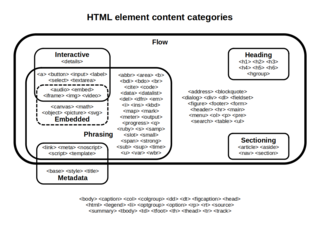
The Semantic Web, sometimes known as Web 3.0, is an extension of the World Wide Web through standards set by the World Wide Web Consortium (W3C). The goal of the Semantic Web is to make Internet data machine-readable.
MPEG-7 is a multimedia content description standard. It was standardized in ISO/IEC 15938. This description will be associated with the content itself, to allow fast and efficient searching for material that is of interest to the user. MPEG-7 is formally called Multimedia Content Description Interface. Thus, it is not a standard which deals with the actual encoding of moving pictures and audio, like MPEG-1, MPEG-2 and MPEG-4. It uses XML to store metadata, and can be attached to timecode in order to tag particular events, or synchronise lyrics to a song, for example.
Music information retrieval (MIR) is the interdisciplinary science of retrieving information from music. Those involved in MIR may have a background in academic musicology, psychoacoustics, psychology, signal processing, informatics, machine learning, optical music recognition, computational intelligence or some combination of these.
In computer science, a software agent is a computer program that acts for a user or another program in a relationship of agency.

A data dictionary, or metadata repository, as defined in the IBM Dictionary of Computing, is a "centralized repository of information about data such as meaning, relationships to other data, origin, usage, and format". Oracle defines it as a collection of tables with metadata. The term can have one of several closely related meanings pertaining to databases and database management systems (DBMS):
In computing and data management, data mapping is the process of creating data element mappings between two distinct data models. Data mapping is used as a first step for a wide variety of data integration tasks, including:
A metadata registry is a central location in an organization where metadata definitions are stored and maintained in a controlled method.
The ISO/IEC 11179 metadata registry (MDR) standard is an international ISO/IEC standard for representing metadata for an organization in a metadata registry. It documents the standardization and registration of metadata to make data understandable and shareable.
A representation term is a word, or a combination of words, that semantically represent the data type of a data element. A representation term is commonly referred to as a class word by those familiar with data dictionaries. ISO/IEC 11179-5:2005 defines representation term as a designation of an instance of a representation class As used in ISO/IEC 11179, the representation term is that part of a data element name that provides a semantic pointer to the underlying data type. A Representation class is a class of representations. This representation class provides a way to classify or group data elements.
The semantic spectrum, sometimes referred to as the ontology spectrum, the smart data continuum, or semantic precision, is a series of increasingly precise or rather semantically expressive definitions for data elements in knowledge representations, especially for machine use.
In metadata, a data element definition is a human readable phrase or sentence associated with a data element within a data dictionary that describes the meaning or semantics of a data element.
Semantic translation is the process of using semantic information to aid in the translation of data in one representation or data model to another representation or data model. Semantic translation takes advantage of semantics that associate meaning with individual data elements in one dictionary to create an equivalent meaning in a second system.
Metadata publishing is the process of making metadata data elements available to external users, both people and machines using a formal review process and a commitment to change control processes.
In metadata, metadata discovery is the process of using automated tools to discover the semantics of a data element in data sets. This process usually ends with a set of mappings between the data source elements and a centralized metadata registry. Metadata discovery is also known as metadata scanning.
Simple Knowledge Organization System (SKOS) is a W3C recommendation designed for representation of thesauri, classification schemes, taxonomies, subject-heading systems, or any other type of structured controlled vocabulary. SKOS is part of the Semantic Web family of standards built upon RDF and RDFS, and its main objective is to enable easy publication and use of such vocabularies as linked data.
Semantic interoperability is the ability of computer systems to exchange data with unambiguous, shared meaning. Semantic interoperability is a requirement to enable machine computable logic, inferencing, knowledge discovery, and data federation between information systems.
Geospatial metadata is a type of metadata applicable to geographic data and information. Such objects may be stored in a geographic information system (GIS) or may simply be documents, data-sets, images or other objects, services, or related items that exist in some other native environment but whose features may be appropriate to describe in a (geographic) metadata catalog.

Semantic HTML is the use of HTML markup to reinforce the semantics, or meaning, of the information in web pages and web applications rather than merely to define its presentation or look. Semantic HTML is processed by traditional web browsers as well as by many other user agents. CSS is used to suggest its presentation to human users.
PREservation Metadata: Implementation Strategies (PREMIS) is the de facto digital preservation metadata standard.

Metadata is "data that provides information about other data", but not the content of the data itself, such as the text of a message or the image itself. There are many distinct types of metadata, including:



